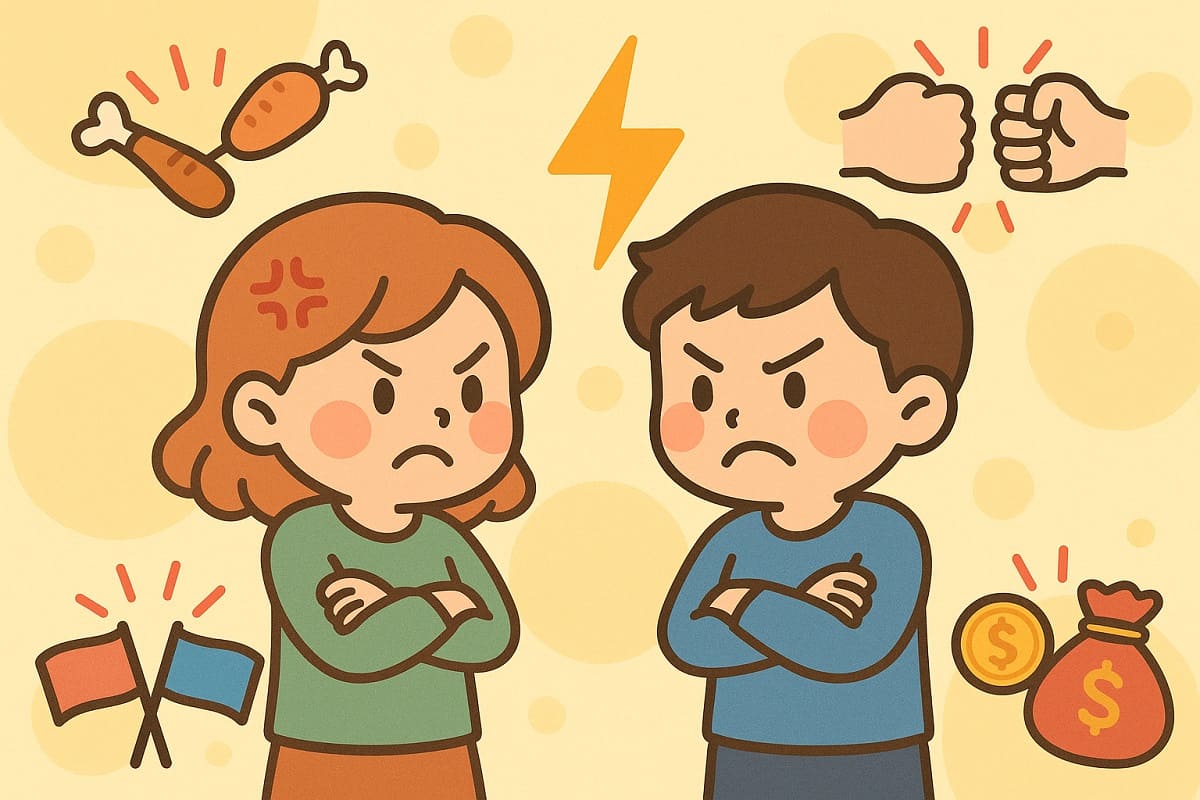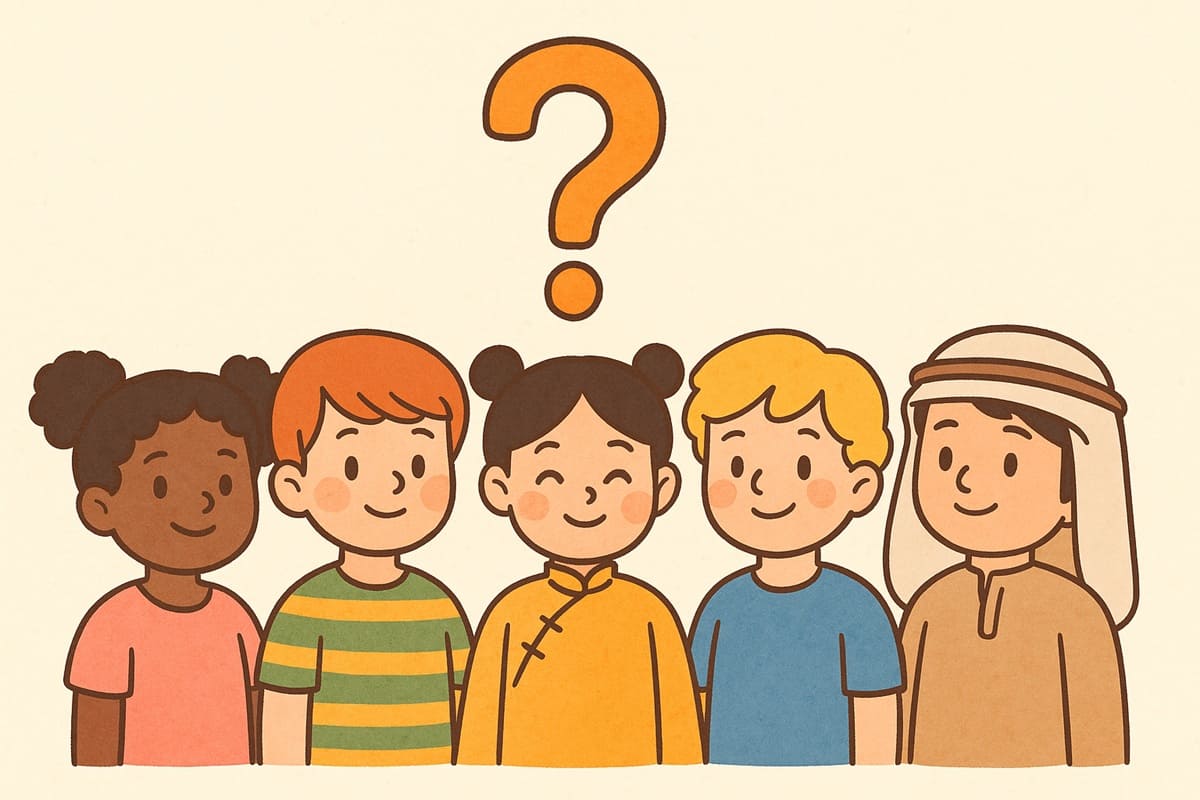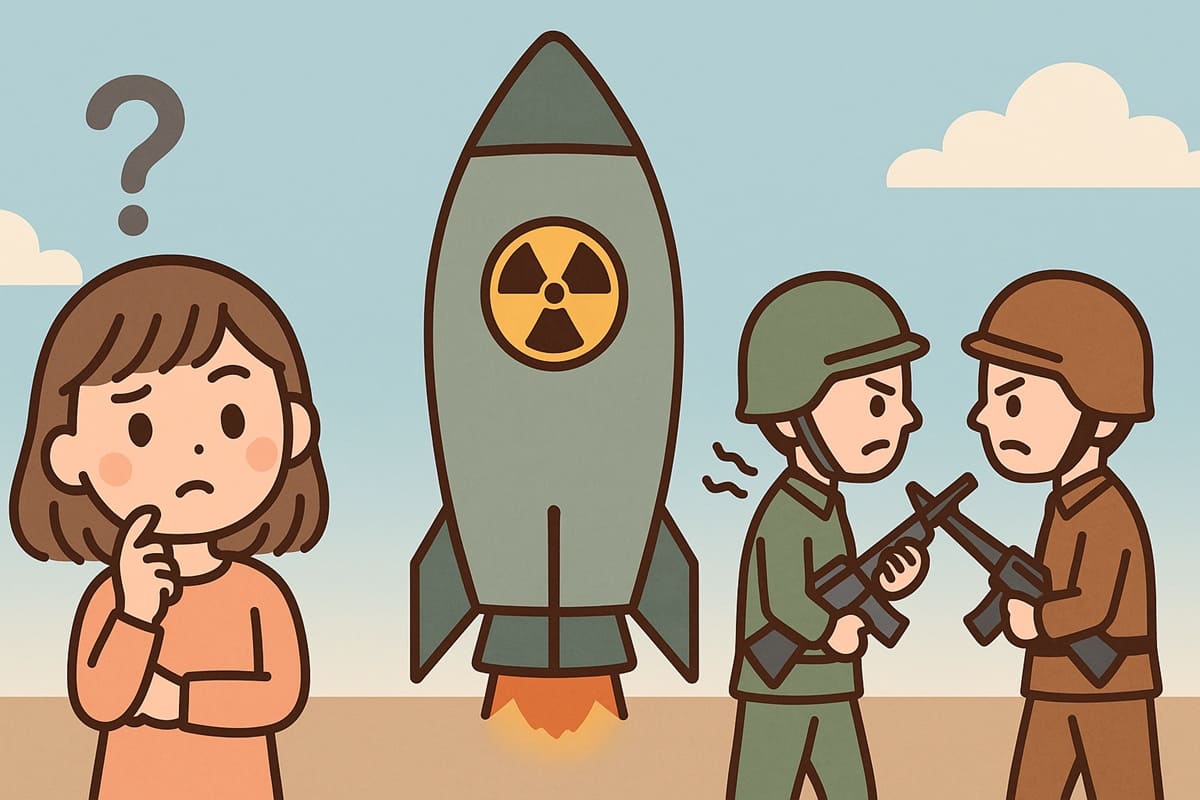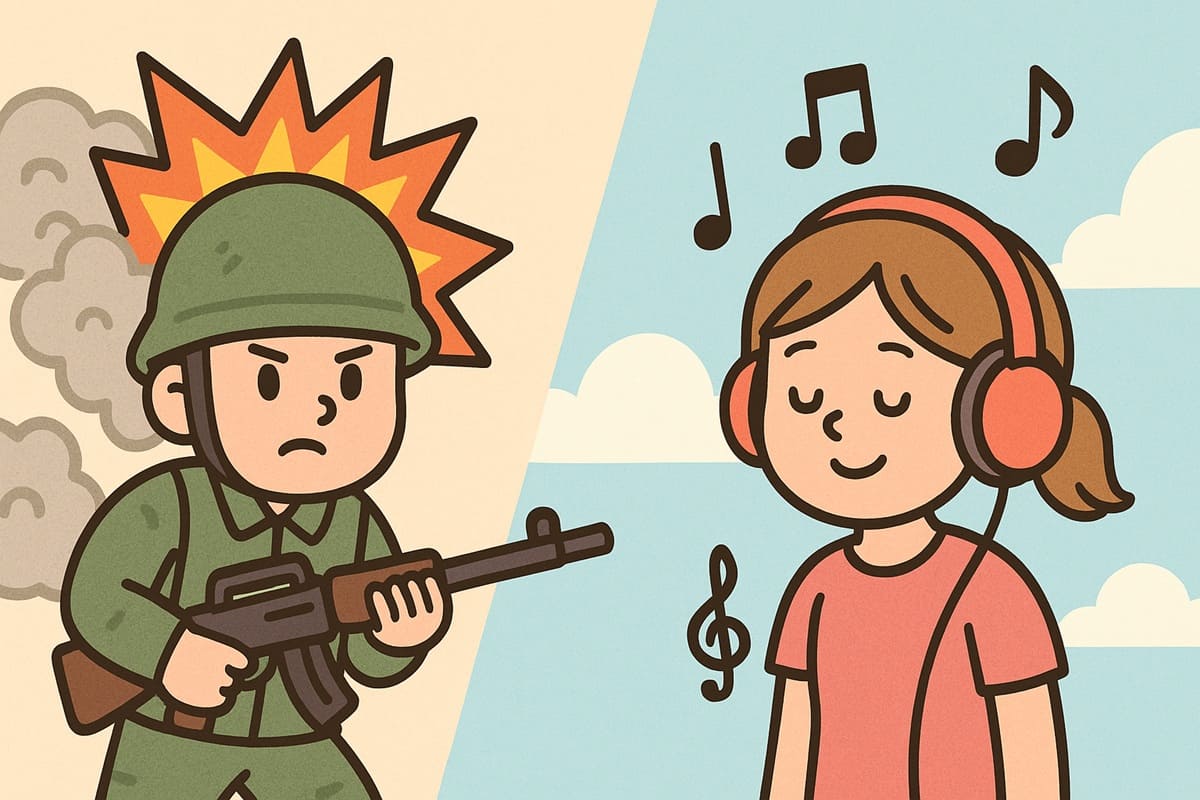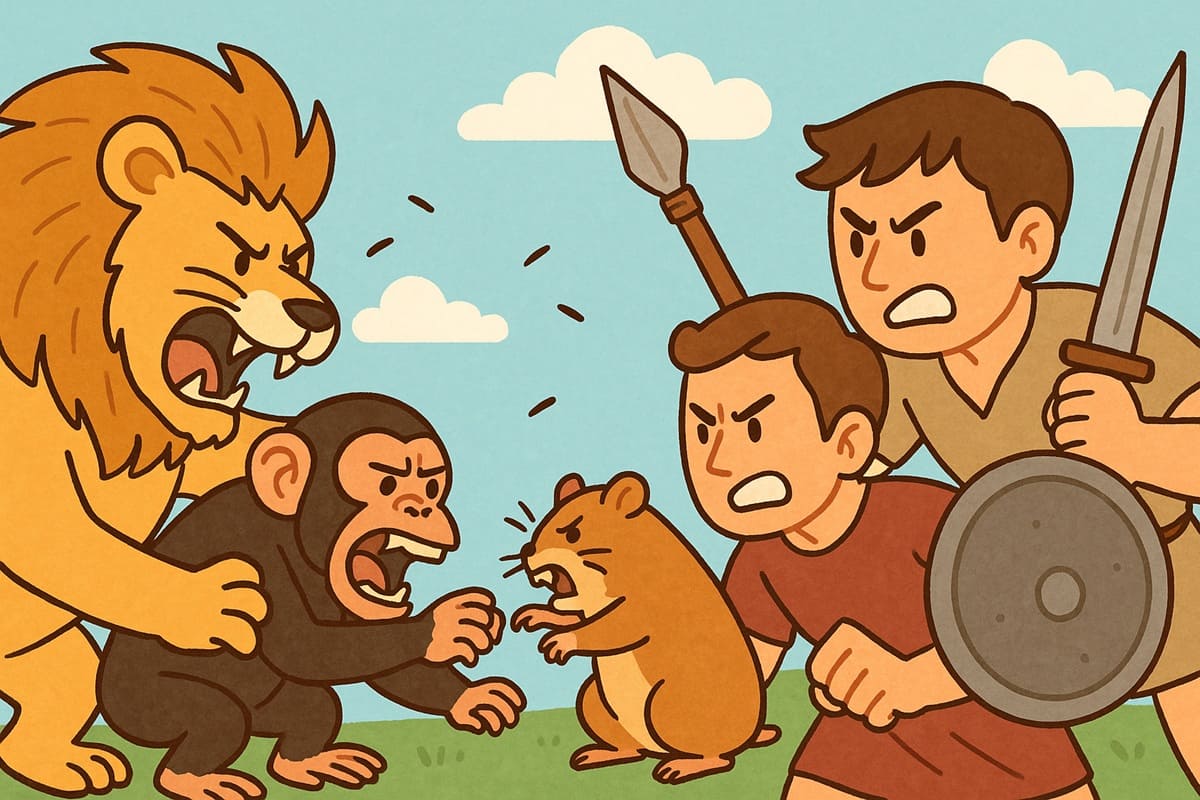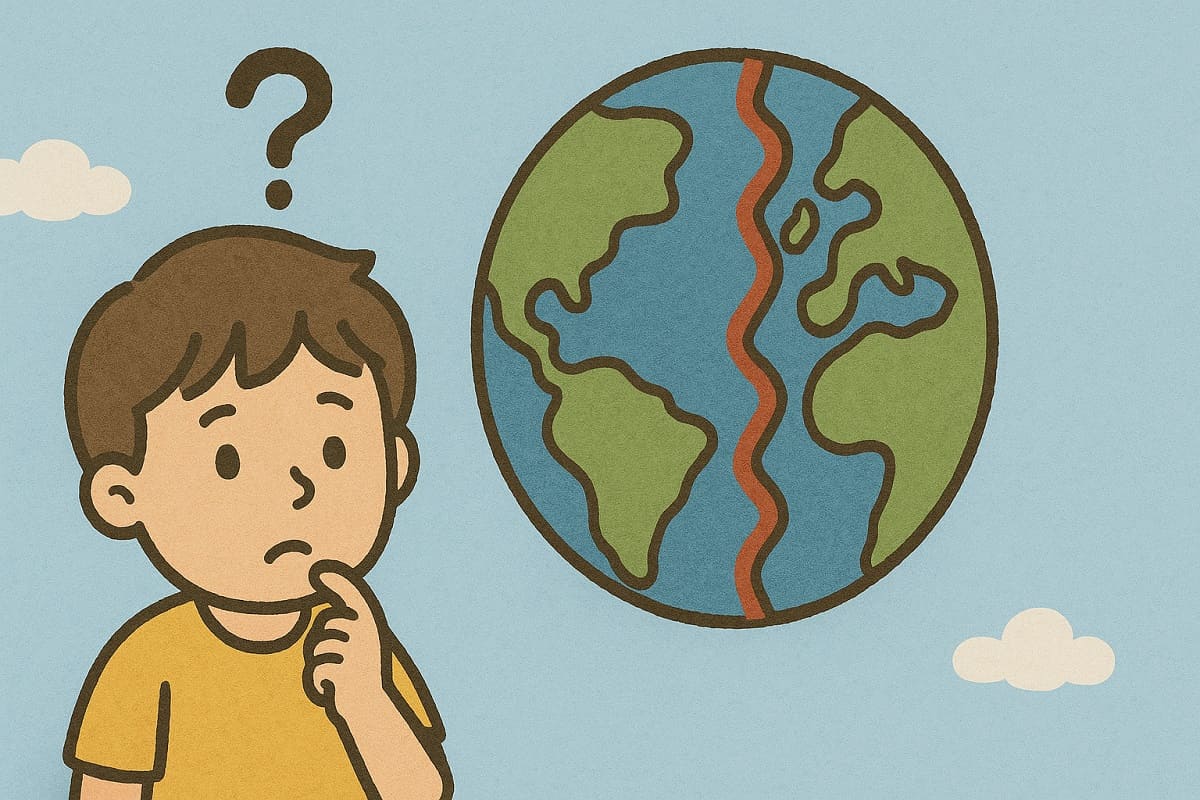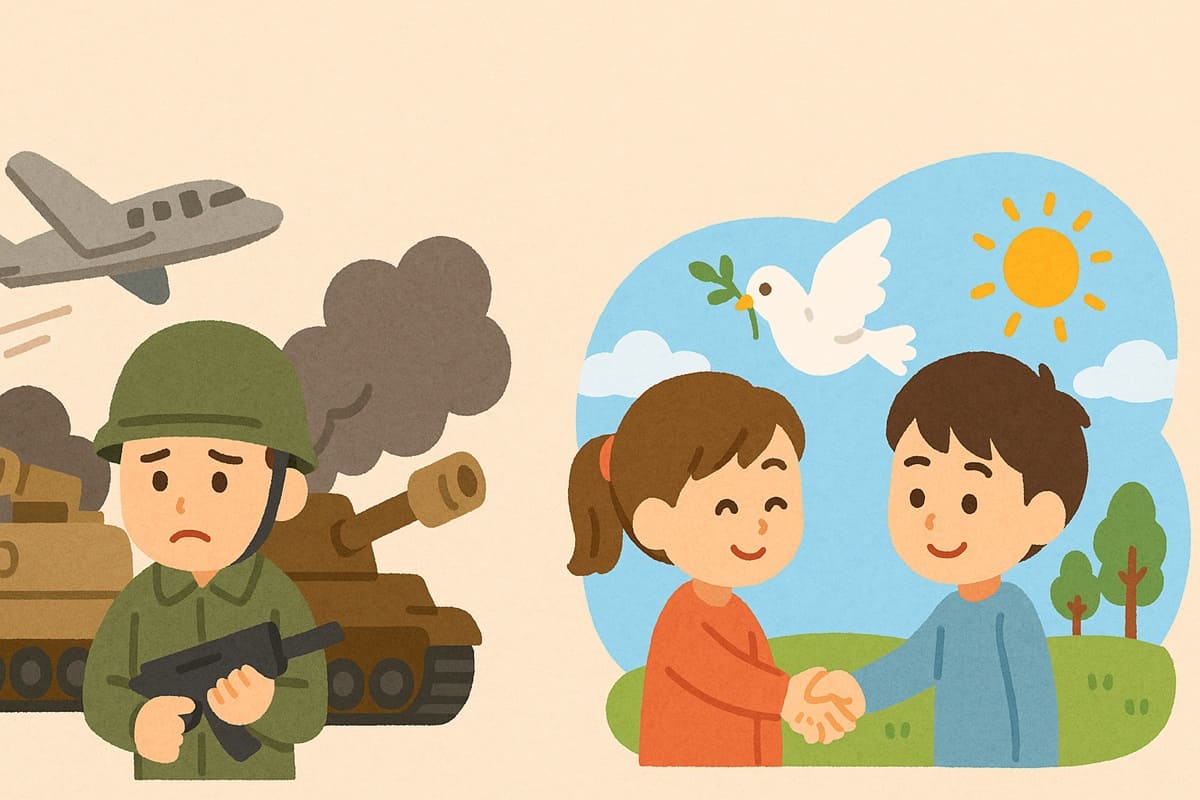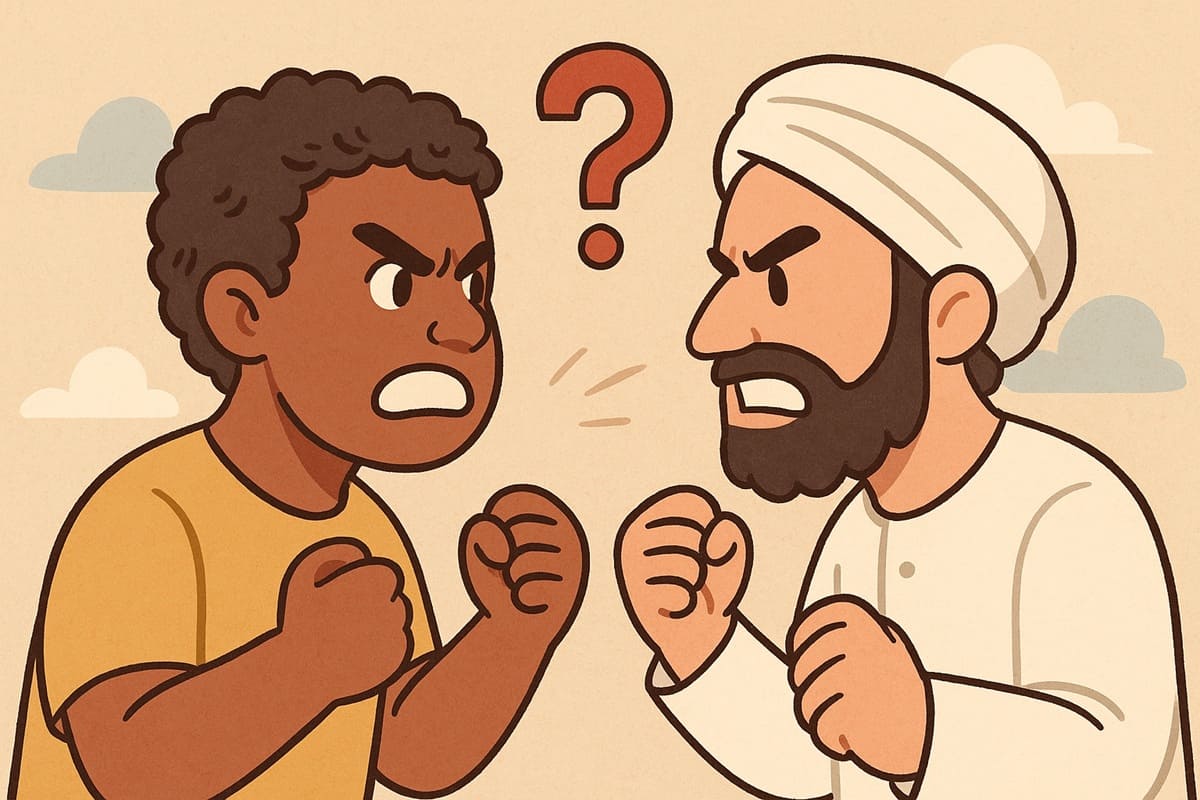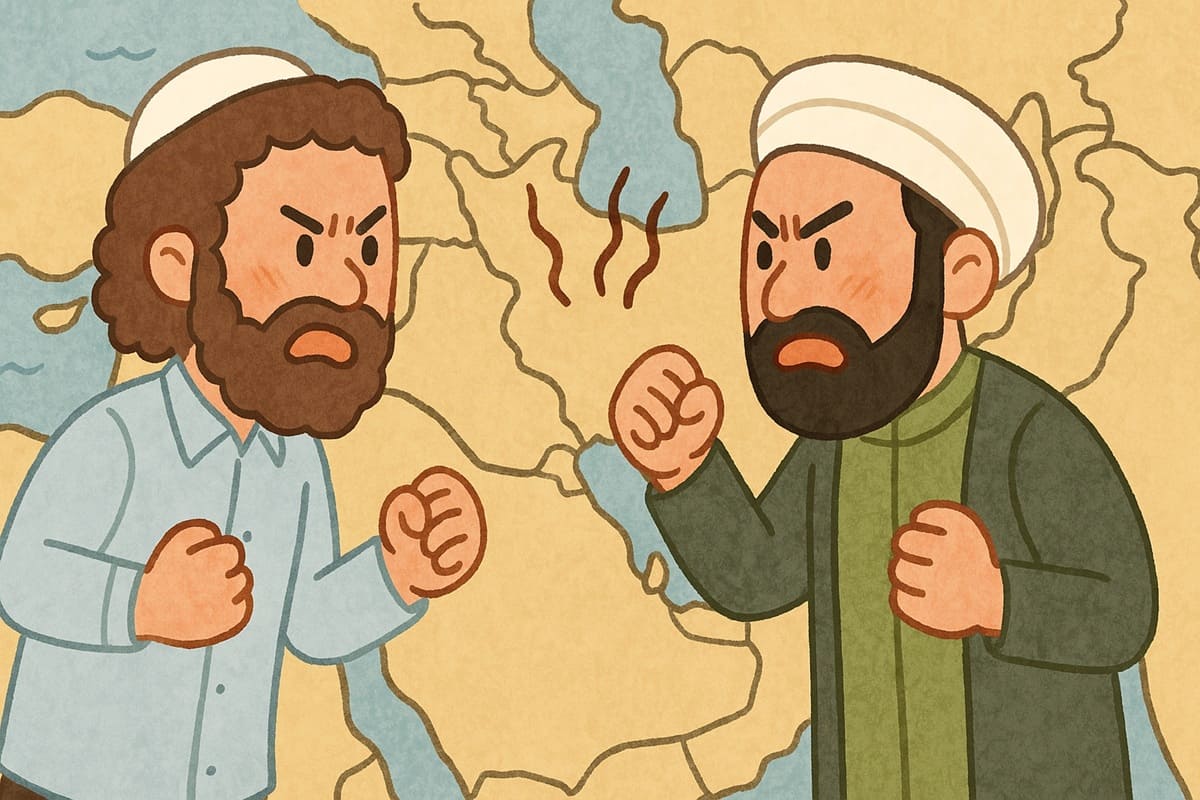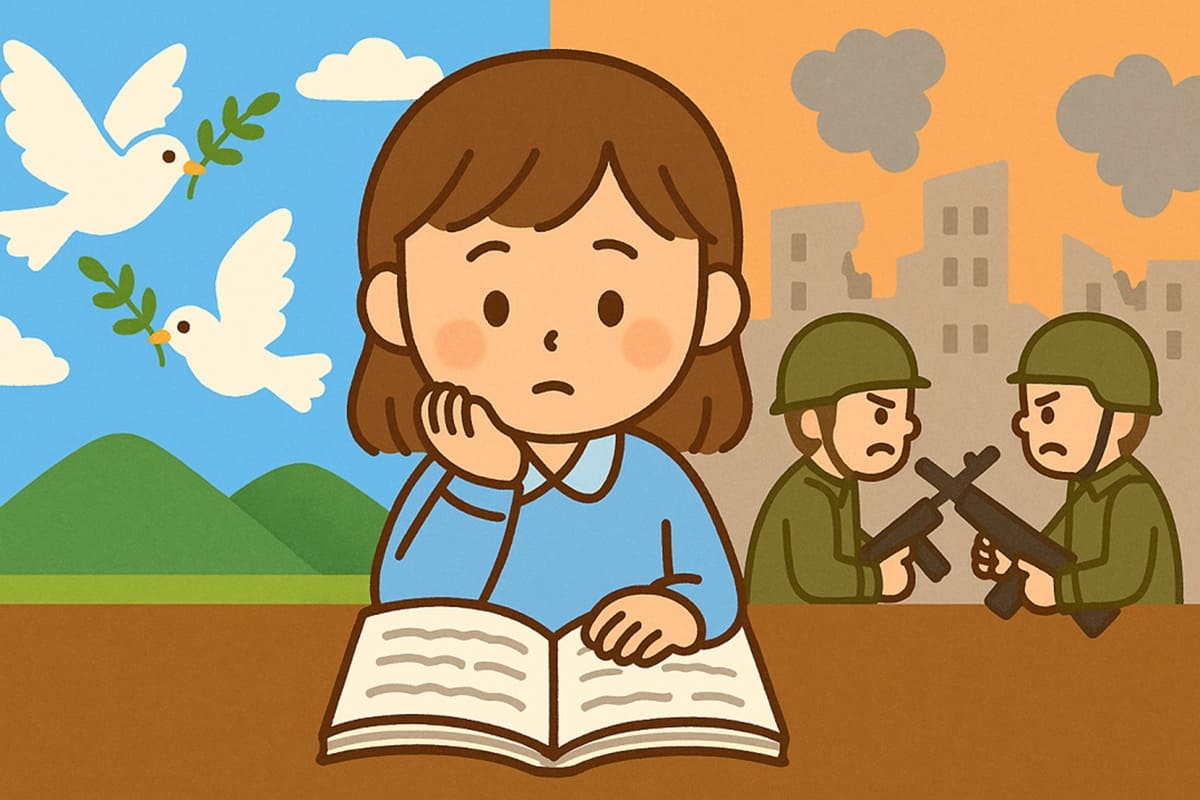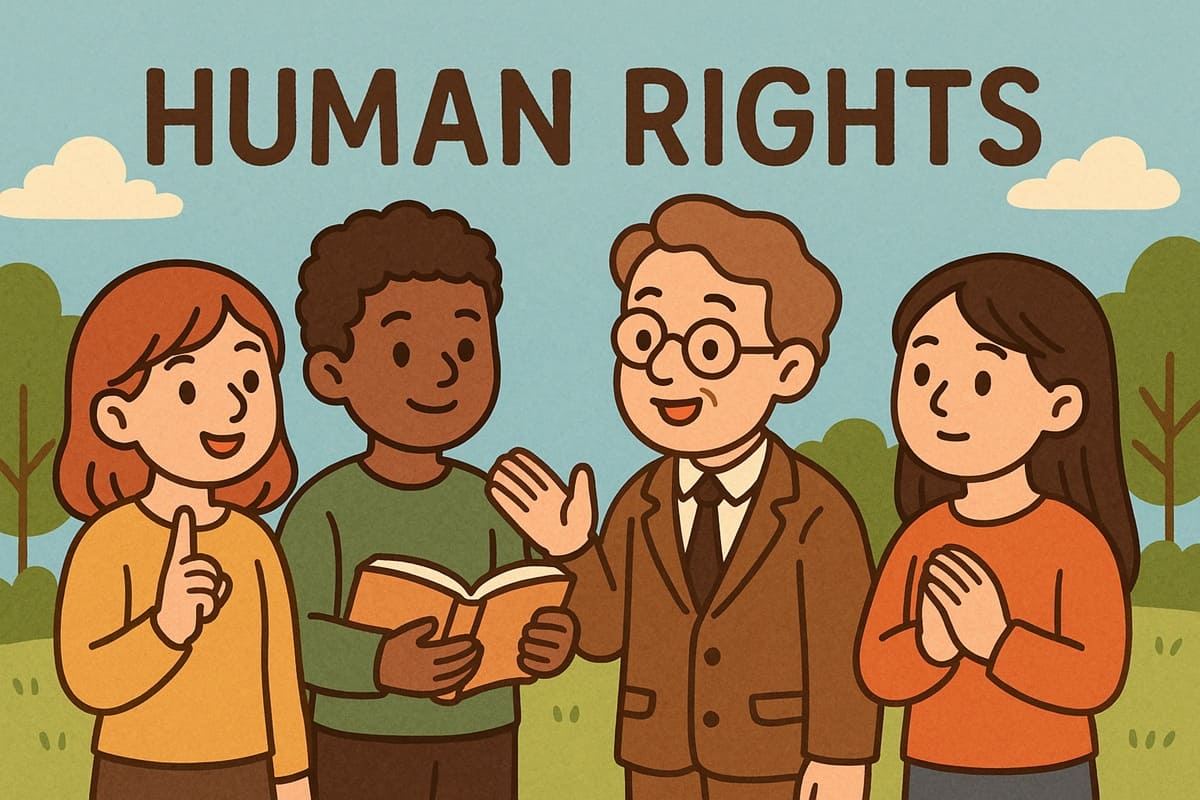What Is “Peace”?
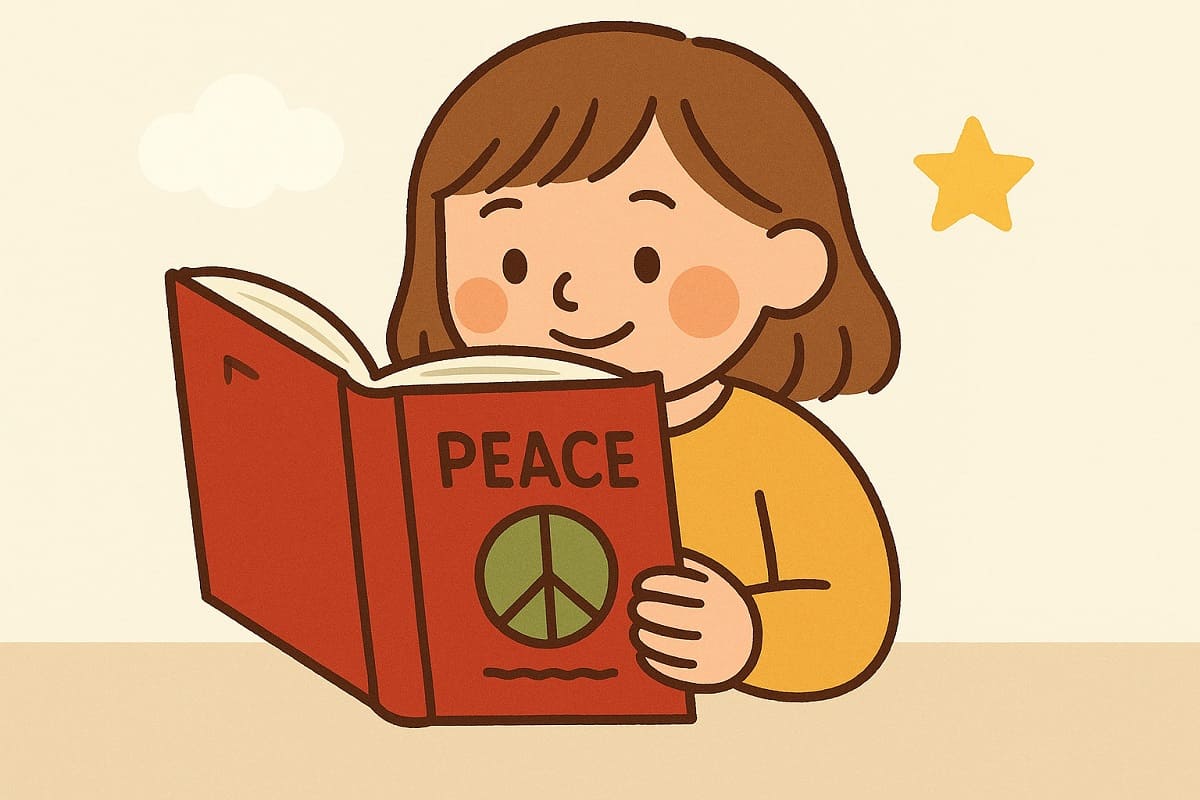
When you hear the word “peace,” what comes to mind?
Perhaps you think of “a world without war,” “no fighting,” or “calm and quiet days.” Everyone has a slightly different image. But the word “peace,” which we often use so casually, actually has a deep and complex meaning. In this article, we’ll explain in simple terms what “peace” really means.
What Do People Usually Mean by “Peace”?
Most people think of “peace” as a state without war or conflict. For example, a country where bombs aren’t falling and bullets aren’t flying — where people can live safely in their daily lives — is often described as “peaceful.”
In a survey conducted in Japan, many people associated “peace” with “no war” or “everyone getting along.” Others mentioned ideas like “harmony between nature and humans” or “a society where people can live without fear.” In other words, peace isn’t just about the absence of conflict — it’s also seen as a state of security, comfort, and well-being.
What Do Dictionaries Say?
Dictionaries and encyclopedias offer various definitions of peace.
For instance, the Britannica International Encyclopedia defines peace as “a state in which war is not taking place.” But it also notes that peace can have a broader meaning — such as “a way of organizing society through non-violent means.”
English dictionaries describe peace as “a quiet state without conflict or disorder” or “a condition of harmony in relationships or within society.” So peace isn’t just the absence of war — it also means an environment where people can live in safety and harmony.
Have You Heard of Peace Studies?
There is actually an academic field called Peace Studies. It emerged after World War II, as people around the world began asking, “How can we build a world without war?”
One of the founders of this field was Johan Galtung, a Norwegian scholar. He argued that “peace is not simply the absence of war.” In other words, just ending war does not automatically bring peace. True peace also requires eliminating things like discrimination, poverty, and cultural prejudice in society.
Negative Peace and Positive Peace
In peace studies, peace is often divided into two types:
- Negative Peace
→ A state where war and violence are absent - Positive Peace
→ A state not only without violence, but also free from social issues like poverty and discrimination, where people support one another
For example, even if there’s no bullying or fighting at school, it’s not truly peaceful if there’s a tense atmosphere or someone is being ignored. This is an example of Negative Peace — the absence of visible conflict, but not a truly safe environment.
On the other hand, a school where students naturally speak kindly to each other, help those in trouble, and accept each other’s differences — that’s closer to Positive Peace, or real peace. In short, true peace is not just “no trouble,” but “a space where everyone can feel safe and at ease.”
Is Violence Only About Hitting?
In peace studies, “violence” is not limited to physical actions like hitting or war.
- Direct Violence: Physical violence such as hitting, kicking, war, or fighting
- Structural Violence: Discrimination or inequality built into social systems (e.g., a society where only the rich can access healthcare)
- Cultural Violence: Ways of thinking that justify discrimination (e.g., “men must be strong” or “women must be modest” — biased value systems)
So not only visible violence, but also invisible violence can prevent peace.
How Can We Eliminate Violence?
So how can we create a society without violence — a peaceful society?
Peace studies suggest several approaches:
- Valuing Dialogue and Discussion
Even when opinions differ, it’s important to resolve conflicts through conversation and negotiation, not violence. - Non-Violent Action
Like Gandhi, some seek social change without violence. Demonstrations and petitions are examples of this. - Peace Education
It’s important to teach children from a young age how to understand others’ perspectives and resolve conflict peacefully. - Efforts to Eliminate Poverty and Discrimination
Inequality often leads to anger and conflict. We need to build a society where everyone is treated fairly.
Conclusion: What Does “Peace” Mean to You?
Peace is not just the absence of war — it’s about building a society where everyone can live without fear, free from discrimination and inequality. Violence takes many forms, and getting rid of it requires time and effort. But the first step begins with each of us — in how we think and how we act.
What does “peace” mean to you?
Take a moment and really think about it.
Main References
- Galtung, J. (1969). Violence, peace, and peace research. Journal of Peace Research, 6(3), 167–191.
- Building Peace Forum. (n.d.). Structural, cultural, and direct violence hand-out.
- Vision of Humanity. (n.d.). Peace studies comes full circle: From radical threat to cornerstone of conflict settlement.
- Merriam-Webster. (n.d.). Peace. In Merriam-Webster.com dictionary.
- Wikipedia contributors. (n.d.). Peace and conflict studies. In Wikipedia.
